On a post-Blizzard night in New York, I arrived at Estela to listen to the man who is responsible for the “re-birth” of Sherry. Over small dishes and while tasting through six of his wines, he told us the story of Equipo Navazos…
Jesús Barquín was born in Seville, Spain. His family hails from the North but for now he has settled in Granada, where he is a Professor of Criminal Law at the University. No one else in his family is in the wine business. So, how did he manage to launch a group that produces some of the most sought-after Sherries? Naturally, it all started with a supper club.
A few great wines have started this way. In 1905, Eugène Aimé Salon purchased a small parcel Le-Mesnil-Sur-Oger where he began making Champagne for his Parisian lunch club. Today, Salon is an icon for blanc de blancs Champagne and few rival it in quality…
Like Salon, Barquín enjoys dining with friends and bringing bottles to the table. His group consistently found Sherry to not only work well with dishes but they were astounded by it’s depth of versatility. So when his friend, Eduardo Ojeda, “the best winemaker in Sherry,” discovered a cask of Amontillado, he reached out to Barquin right away. They figured out how much the Amontillado would cost and broke it down for the supper club. The group bought the wine. Today, Equipo Navazos is still made up of the same 30-40 founding members who bought that first cask.
When bottling “La Bota de Amontillado,” Barquin says they labeled it #1 because although it was just for private consumption, they knew more would follow. A reference to Edgar Allan Poe’s “The Cask of Amontillado” (1846), the first wine is an homage to history, literature and the region itself. Born from a love of Sherry, this project is unique, “these wines are not for mass market consumption, they are made for those who appreciate them.”
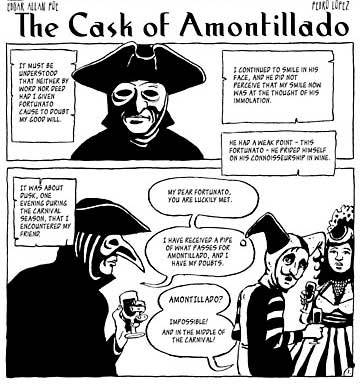
The first wine we tasted was his La Bota de Palo Cortado 47 “Bota NO”, where the average wine in the bottle is 80 years old. From a Sanlúcar solera that used to belong to Gaspar Florido, ”Bota NO” is marked on barrels reserved for the owner. Exceptionally high in acidity but also marked by concentration, Barquin poured but a few drops in my glass. He insists that Sherry needs to be served in this manner, “it’s so intense and powerful that you need to appreciate it in small quantities.” And he’s right. A drop will coat your palate and let each layer unveil itself, slowly.
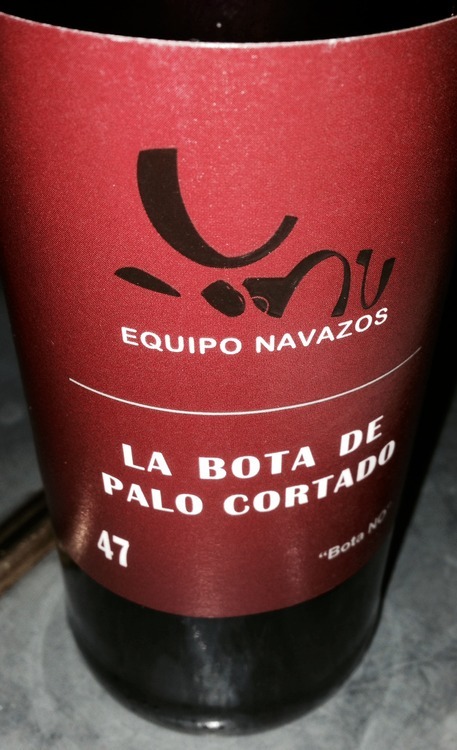
Next, was La Bota de Manzanilla 55 which is the 7th release from the same Solera that, in the ‘La Bota’ series, produced #: 4, 8, 16, 22, 32 and 42. The most recent bottling it shares similarities with it’s younger siblings but with more development.
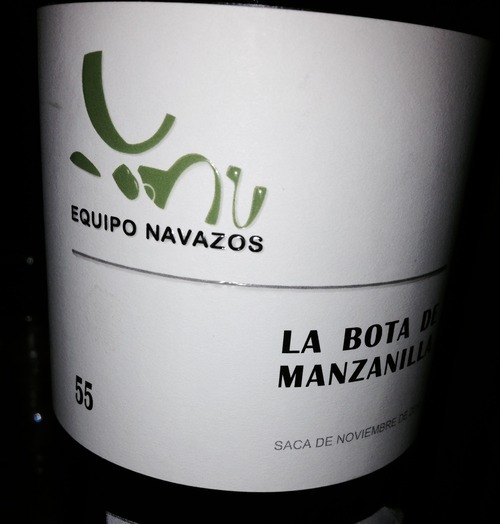
Following, was the La Bota de Amontillado 49 “Boot AR” which like #47 was sourced from Gaspar Florido’s older casks. Bottled last year, the wines inside range from 55-80+ years. The cask was selected from the unique solera, “Ánsar Real” (a type of goose) and the bottle carries it’s initials. Incredibly savage and searing with 14 grams of acidity we needed to match it with razor clams topped with shaved Horseradish.
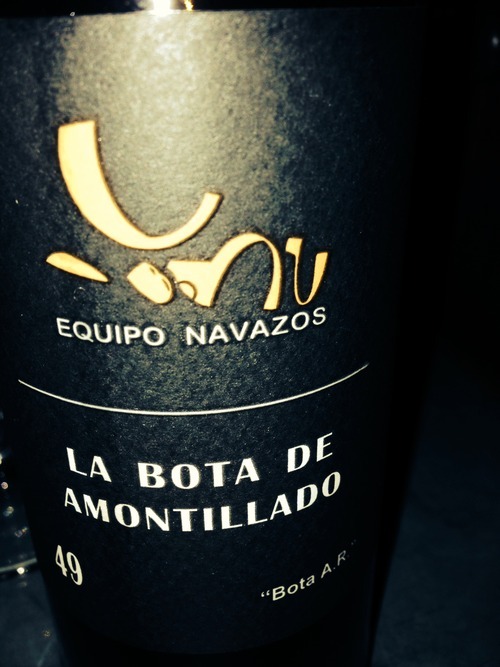
Unfortified but otherwise produced like a Sherry, we tasted next the La Bota de Florpower MMX 53 “Más allá”. From 100% Palomino, this Sanlúcar white sits under it’s flor for over 4 years. It sits elegantly at just 11.5% alcohol. While it undergoes this biological aging, the flor sometimes thins and exposes the wine to oxygen. Therefore, there are hints of oxidation but it’s namesake is what makes it unique. The name “Florpower,” was jokingly invented over a yeasty-drink-filled trip Barquin enjoyed with friends in Copenhagen. And it stuck. “Más allá” meaning “beyond,” is meant to imply that it follows the original“Florpower #44” but with an extra 10 months of aging. Wines like these might seem unusual to us today but Barquin is simply following history. He bottles these wines without sulfur or filtration (save for pulling off the flor) and they remain stable. Why? He says that as it evolves only the strong wines survive and he ensures that everything he bottles is healthy. Letting them breathe is natural, adding sulfurs, he claims, is not.
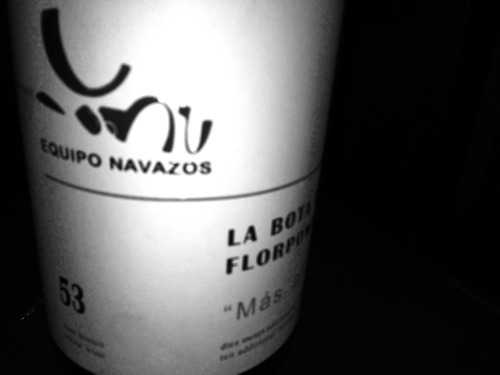
Next wasLa Bota of Palo Cortado 52 “Sanlúcar,” a single-vineyard, vintage product made completely by Eduardo Ojeda it is the same wine that went into #53 only this has been fortified. After a short biological aging period, this Palo Cortado was fortified and aged oxidatively. It remains lean, despite it’s 18% alcohol and is graceful in an assertive manner.
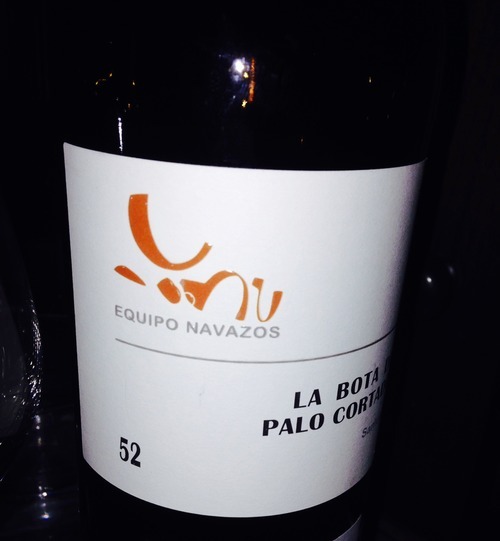
Lastly, the 2012 Navazos-Niepoort Vino Bianco was another example of an “Unfortified Sherry.” From further inland, it rounds out at 12.5% alcohol, is fermented in cask and spends only 8-9 months under a veil of flor. It is much fresher than #53 but comparisons seem silly on such a unique product.
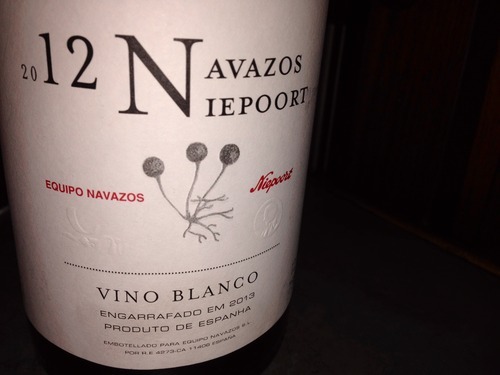
After tasting through a bit of Equipo Navazos history, I asked Barquin about the future. Although Sherry remains a small market, mostly prevalent in Anglo-saxon influenced countries, he believes that people are starting to look for small-production and higher quality products. “Cheap Sherry will disappear soon- or at least it should! What’s happening here in New York, it wouldn’t be so strange if it expanded. Like German Riesling, it will never be a mass-market item but it can find a niche in every market.”
Today, in Jerez there is sadly a large gap between the best wines of the region and lower-quality production. To make that gap smaller, Barquin insists that a clean-up needs to take place. “There is only one way to do things- well. If you do things well, these things will eventually shine. It isn’t a matter of marketing your product, or educating the consumer, it’s a matter of making good wine.”
With the quality of Barquin’s products well above others, producers of the region should take note. And although he is a setting an upward trend for Sherry, he still stays rooted in how the company was born- from enjoyment. ”Wine, historically, isn’t intellectual, it’s enjoyable. First, enjoy the wine. Then, you can start to think about it. I don’t know how most dishes are cooked, but I still enjoy them… I love good curry but I don’t know how to make it.”
Jesús Barquín and Eduardo Ojeda have created something special with Equipo Navazos. Each numbered bota that is released is limited- around 800-1,300 bottles each. This minuscule output has caused collectors and Sommeliers to scramble for an allocation and for good reason- each wine tells a story. Whether it’s a discovered bota that was hidden in a Jerez barrio or a product crafted from decades of upkeep- there is a unique finding in each bottle.
So, what does Jesús Barquín see for the future of Equipo Navazos?
”We are just an “antidote” in historical terms, what we are doing is meaningful but I don’t have great expectations, we will just enjoy it. Will it last? We’ll see..”
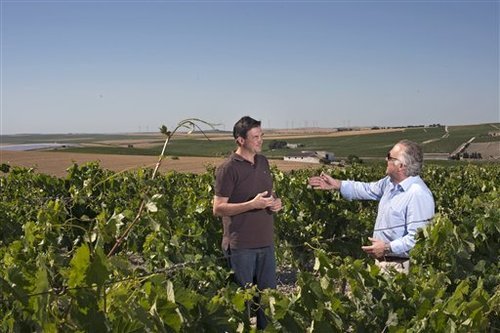
By Victoria James.. and Get your Grape On. You must check out her site. http://geturgrapeon.tumblr.com/




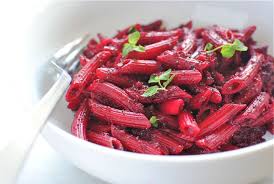
 Hi I’m Catherine, founder of Wine Women And Chocolate. Want to become a contributor for Wine, Women & Chocolate? Interested in sharing your unique perspective to a group of supportive, like-minded women?
Hi I’m Catherine, founder of Wine Women And Chocolate. Want to become a contributor for Wine, Women & Chocolate? Interested in sharing your unique perspective to a group of supportive, like-minded women?